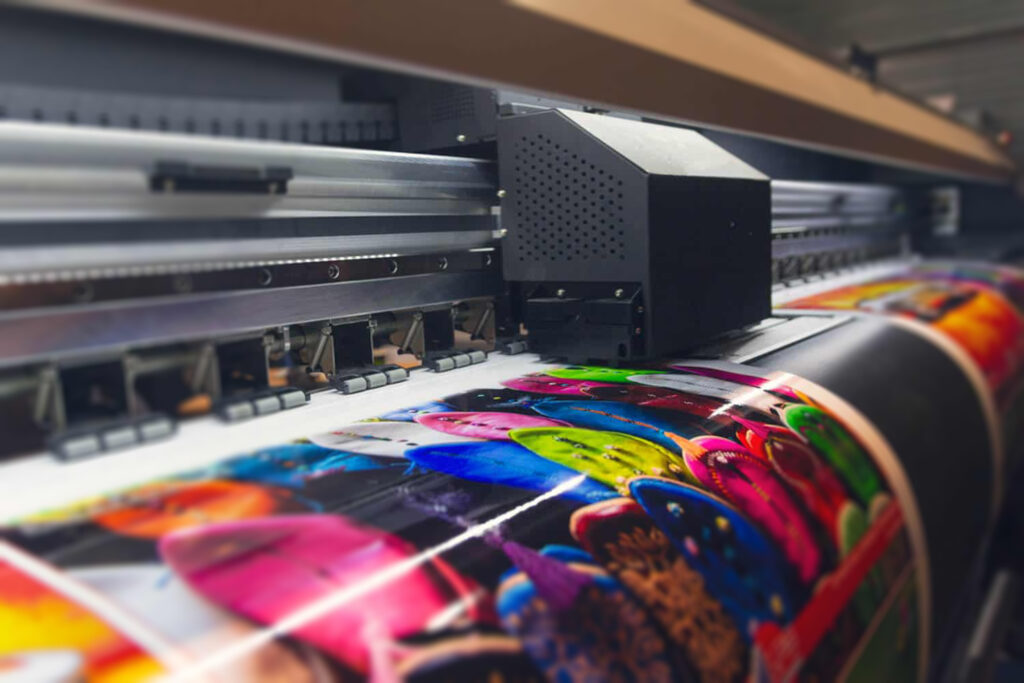
Printing 101: What is Digital Printing?
Embarking on the journey of modern printing technology, digital printing emerges as a transformative force, reshaping how we reproduce text and images on various surfaces. Unlike traditional methods such as offset printing, digital printing is a direct-to-substrate process that leverages digital files to create high-quality prints swiftly and efficiently. This article delves into the intricacies of digital printing, exploring its mechanisms, applications, and the distinct advantages that position it at the forefront of contemporary printing practices. Join us as we unravel the digital realm of printing, where precision, versatility, and rapid turnaround times converge to redefine the possibilities in the world of visual communication.
What is Digital Printing?
Digital printing is a modern printing method that directly reproduces digital files onto a variety of surfaces, eliminating the need for traditional printing plates. Unlike conventional methods such as offset printing, which involves intermediary steps, digital printing involves directly transferring digital data from a computer to a printing device. This process is highly versatile, accommodating a range of materials, including paper, cardstock, fabric, and more. Digital printing is characterized by its efficiency, flexibility, and ability to produce high-quality prints with minimal setup time, making it a preferred choice for short to medium-print runs and personalized printing projects.
Difference Between Digital Printing and Large Format Printing
The primary distinction between digital printing and large-format printing lies in the scale and scope of the output. Digital printing encompasses a broad range of printing methods where digital files are directly transferred onto various substrates, offering versatility and suitability for small to medium print runs. On the other hand, large-format printing specifically refers to the production of oversized prints, often exceeding standard print dimensions. While large-format printing can utilize digital technology, it is distinguished by its focus on producing larger-than-life visuals, making it ideal for applications such as banners, posters, signage, and other grand-format displays. In essence, digital printing represents the technology, while large format printing denotes the size and impact of the final printed materials.
How Does It Work?
Digital printing operates through a straightforward and efficient process that directly transfers digital files onto a chosen substrate. The key steps involved in digital printing are as follows:
- Digital File Preparation:
- The printing process begins with the creation or reception of a digital file containing the text, graphics, or images to be printed. This file serves as the digital blueprint for the printing job.
- Raster Image Processing (RIP):
- The digital file undergoes processing through a Raster Image Processor (RIP), which translates the digital data into a format that the digital printer can comprehend. This process involves converting the file into a series of dots or pixels.
- Printing:
- The digital printer receives the processed digital data and applies ink or toner directly onto the chosen printing substrate. The application is precise and occurs without the use of printing plates or other intermediary steps.
- Fixing the Ink or Toner:
- In the case of inkjet printers, the printed image may require a short drying time. In contrast, toner-based printers utilize heat to fuse the toner onto the substrate, ensuring a durable and smudge-resistant print.
- Finishing:
- Once the printing is complete, the printed materials may undergo finishing processes such as cutting, binding, or laminating, depending on the specific requirements of the print job.
This streamlined digital printing process allows for quick turnaround times, cost-effective short runs, and the ability to produce personalized or variable data prints with ease. The absence of printing plates and the direct transfer of digital data contribute to the efficiency and flexibility that characterize digital printing technology.
Types of Printers Used for Digital Printing
The most common types of printers used in digital printing are inkjet printers and laser printers. Each of these printer types has distinct characteristics and is suitable for specific applications:
- Inkjet Printers:
- Overview: Inkjet printers use liquid ink, which is sprayed onto the printing substrate through microscopic nozzles. They are versatile and suitable for various materials, including paper, photo paper, fabric, and more.
- Advantages: High-quality colour prints, suitability for photographic and graphic printing, and the ability to handle various media types.
- Applications: Photo printing, graphic design, promotional materials, and personalized printing.
- Laser Printers:
- Overview: Laser printers use toner, a fine powder, which is fused onto the printing substrate using heat and pressure. They are known for their speed and efficiency.
- Advantages: Fast printing speeds, sharp text quality, and cost-effectiveness for high-volume printing.
- Applications: Business documents, reports, marketing collateral, and general office printing.
- Dye Sublimation Printers:
- Overview: Dye-sublimation printers use a heat transfer process where solid dye is converted into gas and absorbed by a specially coated paper. The gas then permeates the substrate, creating a vibrant and durable print.
- Advantages: Excellent colour reproduction, durability, and suitability for printing on items like textiles, ceramics, and promotional products.
- Applications: Apparel printing, promotional products, and items with specialized coatings.
- UV Printers:
- Overview: UV printers use ultraviolet (UV) light to cure inks directly onto the printing substrate. This process allows for printing on a wide range of materials, including rigid surfaces.
- Advantages: Versatility, the ability to print on rigid materials, and the option for specialized finishes such as gloss or matte.
- Applications: Signage, point-of-sale displays, packaging, and direct printing on rigid materials.
The choice between inkjet, laser, dye sublimation, or UV printing depends on the specific requirements of the printing job, including the type of materials to be printed, the desired print quality, and the volume of the print run.
Applications of Digital Printing
Digital printing finds extensive applications across various industries and creative endeavours due to its versatility, speed, and ability to handle short print runs. Some common digital printing applications include:
- Advertising and Marketing Materials
- Business Documents
- Photography and Fine Art Printing
- Labels and Packaging
- Textile Printing
- Signage and Displays
- Educational Materials
- Event Materials
- Art Reproduction
- Architectural Prints
- Direct Mail Campaigns
Digital printing’s adaptability makes it a preferred choice for both small-scale projects and large-scale production, offering a wide range of creative and practical solutions across diverse industries.
In essence, digital printing emerges as the dynamic heartbeat of modern print technology, seamlessly blending precision and adaptability to redefine the landscape of visual communication. Its direct-to-substrate process, driven by digital files, eliminates the need for conventional printing plates, unlocking a world of possibilities for businesses and creatives alike. From personalized promotional materials to high-quality fine art prints, digital printing stands as the cornerstone of efficiency and versatility. As we navigate the digital realm of printing, the fusion of speed, customization, and superior print quality positions digital printing as a transformative force, shaping the way we bring ideas to life on various surfaces. In this era of rapid innovation, the power and potential of digital printing continue to unfold, leaving an indelible mark on the way we share and showcase our stories.
Are you seeking cutting-edge digital printers that combine speed, precision, and versatility to meet the demands of today’s dynamic market? Look no further. Explore our range of state-of-the-art digital printers that promise not just efficiency but a transformative printing experience. Contact us today and discover how our advanced solutions can take your business to new heights.










